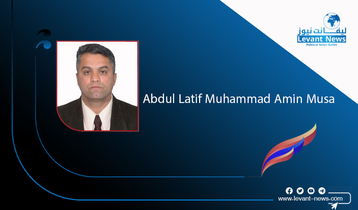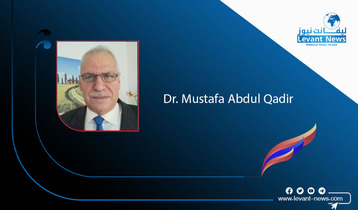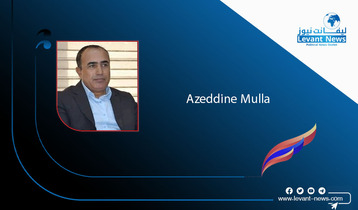-
Idlib’s Slow Motion Car Crash

Syria’s conflict has gone on for so long that sometimes the outside observer can be forgiven for not being sensitive to the ‘cadence of destruction’. In other words that the violence has not operated along a steady equilibrium but instead has endured violent spikes in particular battles, sieges or phases of fighting.
We are currently witnessing a crescendo towards perhaps one of the most terrible spikes in this most terrible of modern wars. The epicentre of this slow motion car crash is of course Idlib in the North-West of the country. This pocket of non-Regime controlled territory is where the many thousands of evacuated citizens of Aleppo, Homs and Eastern Ghouta live alongside hundreds of thousands of other internally displaced Syrians.
The infamous ‘green buses’ that evacuated these Syrians from the ashes of grinding and sustained besiegement, all stopped in Idlib and now there remains nowhere else for them to go. They are to all intensive purposes trapped between a fortified Turkish border and the advancing Syrian regime. Already some 350,000 people have been forced to flee in the last month alone. The death toll is steadily increasing and the little international condemnation that we’ve heard has focused on the indiscriminate shelling and airstrikes but has failed to chart any realistic path out of the morass.
Indeed it is the seemingly inevitability of the direction of travel for the civilians of Idlib that makes the whole story that much more tragic. Syria is bereft of international responsibility and even a resolution to agree that cross border aid can reach those who need it has been subject to the threat of a Security Council veto that has already happened over 13 times when it comes to the conflict.
Global governance has been unable to restraint the conflict and that direct involvement of several permanent members of the Security Council, Russia in particular, has helped to metastasise what once began as a domestic protest as to the arrest of children in the southern town of Daraa but that rapidly evolved into some of the worst bloodshed of the 21st century.
In the absence of global governance more regional solutions, such as the Russia-Turkish and Iranian led Astana Process have seemed like a realistic alternative and potentially an avenue towards a peaceful settlement. However whilst they are demonstrated nominal agreement and repeated ceasefires and creation of new mechanisms like ‘safe zones’ and ‘de-escalation zones’ they have singularly been unable to halt the direction of travel which is on mass bombardment and inevitable Regime advance into the Idlib pocket.
Turkey, home to the largest number of Syrian refugees, is running a unilateral policy of securing its own territory in the central northern borderland of Syria and planning to return refugees into the area. Ankara will not countenance the sudden exodus of millions more Syrians across its borders.
Rather than a sudden collapse Idlib is being dismantled piece by piece, strategic road by strategic road. Idlib’s displaced and civilian population will therefore be increasingly concentrated and kettled towards the Turkish border. This population includes high percentages of families living below the poverty line. They are vulnerable and hugely reliant on humanitarian aid. This aid faces the perfect storm of several issues interacting simultaneously.
Firstly, increased need is being met by decreased funding — partly linked to a war weary donor community who’ve had to foot the bill for almost a decade long response. Secondly the denial of access across the Turkish border, a decision recently made at the UN Security Council, means that what aid there is will struggle to get to who needs it. Finally as the famous adage goes; winter is coming, and populations living in exposed areas will face both human and natural perils.
The promise of Idlib’s slow motion car crash coming into full blow fruition is perhaps only counterweighted by the fundamental unpredictability of the Syrian conflict at large. The current levels regionalisation and internationalisation could hardly have been predicted back in 2011, yet this is a thin sliver of hope for those suffering in Idlib to cling onto.
Tags
You May Also Like
Popular Posts
Caricature
BENEFIT Sponsors BuildHer...
- April 23, 2025
BENEFIT, the Kingdom’s innovator and leading company in Fintech and electronic financial transactions service, has sponsored the BuildHer CityHack 2025 Hackathon, a two-day event spearheaded by the College of Engineering and Technology at the Royal University for Women (RUW).
Aimed at secondary school students, the event brought together a distinguished group of academic professionals and technology experts to mentor and inspire young participants.
More than 100 high school students from across the Kingdom of Bahrain took part in the hackathon, which featured an intensive programme of training workshops and hands-on sessions. These activities were tailored to enhance participants’ critical thinking, collaborative problem-solving, and team-building capabilities, while also encouraging the development of practical and sustainable solutions to contemporary challenges using modern technological tools.
BENEFIT’s Chief Executive Mr. Abdulwahed AlJanahi, commented: “Our support for this educational hackathon reflects our long-term strategic vision to nurture the talents of emerging national youth and empower the next generation of accomplished female leaders in technology. By fostering creativity and innovation, we aim to contribute meaningfully to Bahrain’s comprehensive development goals and align with the aspirations outlined in the Kingdom’s Vision 2030—an ambition in which BENEFIT plays a central role.”
Professor Riyadh Yousif Hamzah, President of the Royal University for Women, commented: “This initiative reflects our commitment to advancing women in STEM fields. We're cultivating a generation of creative, solution-driven female leaders who will drive national development. Our partnership with BENEFIT exemplifies the powerful synergy between academia and private sector in supporting educational innovation.”
Hanan Abdulla Hasan, Senior Manager, PR & Communication at BENEFIT, said: “We are honoured to collaborate with RUW in supporting this remarkable technology-focused event. It highlights our commitment to social responsibility, and our ongoing efforts to enhance the digital and innovation capabilities of young Bahraini women and foster their ability to harness technological tools in the service of a smarter, more sustainable future.”
For his part, Dr. Humam ElAgha, Acting Dean of the College of Engineering and Technology at the University, said: “BuildHer CityHack 2025 embodies our hands-on approach to education. By tackling real-world problems through creative thinking and sustainable solutions, we're preparing women to thrive in the knowledge economy – a cornerstone of the University's vision.”
opinion
Report
ads
Newsletter
Subscribe to our mailing list to get the new updates!






















